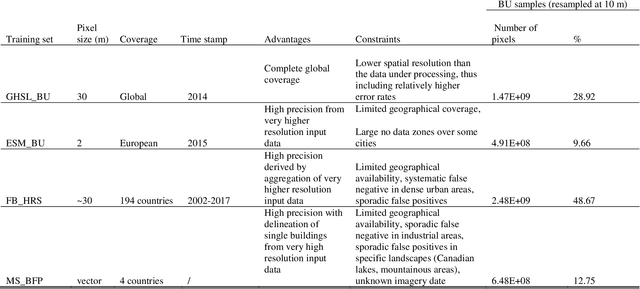Convolutional Neural Networks for Global Human Settlements Mapping from Sentinel-2 Satellite Imagery
Paper and Code
Jun 05, 2020



Spatially consistent and up-to-date maps of human settlements are crucial for addressing policies related to urbanization and sustainability especially in the era of an increasingly urbanized world. The availability of open and free Sentinel-2 data of the Copernicus Earth Observation programme offers a new opportunity for wall-to-wall mapping of human settlements at a global scale. This paper presents a deep-learning-based framework for a fully automated extraction of built-up areas at a spatial resolution of 10 meters from a global composite of Sentinel-2 imagery. A multi-neuro modelling methodology, building on a simple Convolution Neural Networks architecture for pixel-wise image classification of built-up areas is developed. The deployment of the model on the global Sentinel-2 image composite provides the most detailed and complete map reporting about built-up areas for reference year 2018. The validation of the results with an independent reference dataset of building footprints covering 277 sites across the world, establishes the reliability of the built-up layer produced by the proposed framework and the model robustness. The results of this study contribute to cutting-edge research in the field of automated built-up areas mapping from remote sensing data and establish a new reference layer for the analysis of the spatial distribution of human settlements across the rural-urban continuum
 Add to Chrome
Add to Chrome Add to Firefox
Add to Firefox Add to Edge
Add to Edge